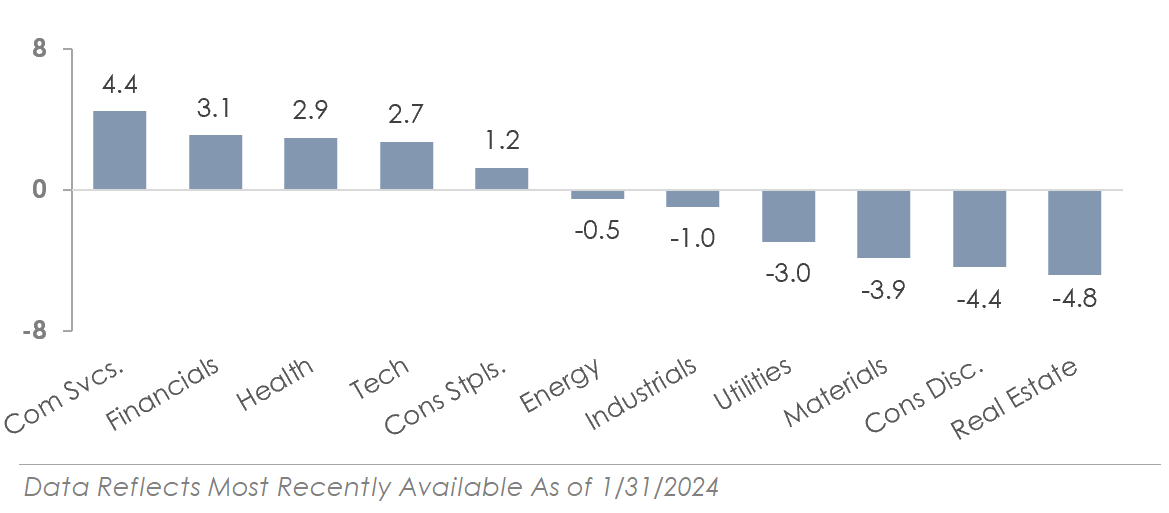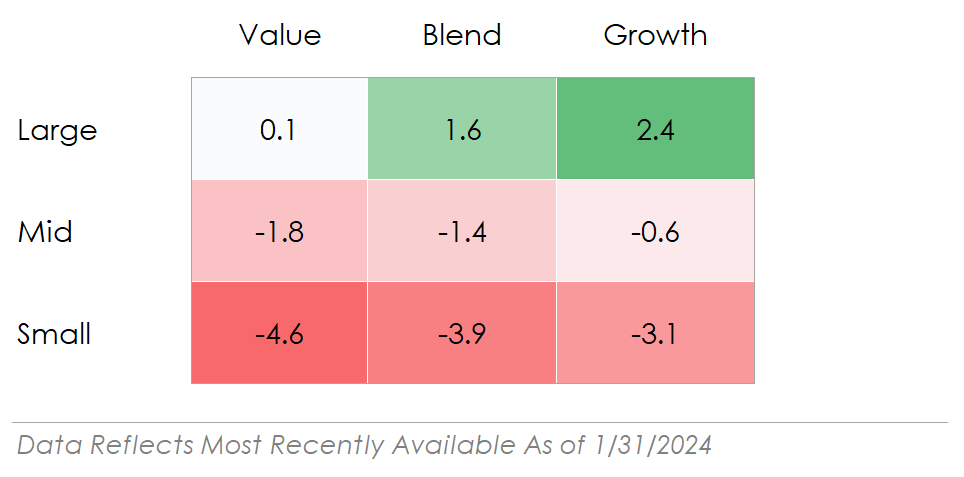Multiple Stock Market Indices Set New All-Time Highs in January
Photo Credit: Fabrizio Conti, Unsplash
Monthly Market Summary
The S&P 500 Index gained +1.6% in January, while the Russell 2000 Index traded down by -3.9%. Five of the eleven S&P 500 sectors traded higher. Communication Services, Financials, and Health Care outperformed the S&P 500, while Real Estate, Consumer Discretionary, and Materials traded lower.
Corporate investment-grade bonds produced a -0.4% total return as Treasury yields rose, slightly underperforming corporate high-yield’s +0.1% total return.
International stocks traded lower and underperformed U.S. stocks. The MSCI EAFE Index of developed market stocks returned -0.5%, while the MSCI Emerging Market Index traded lower by -4.5%.
Stocks Trade Higher in January, Propelled By Continued Mega-Cap Strength
Stocks traded higher to start the new year, with the S&P 500, NASDAQ 100, and Dow Jones Industrial Average each setting new all-time highs. Continuing last year’s trend, the companies with the biggest market caps accounted for a substantial portion of the early-year gains. This leadership can be seen in the January returns of various factors, including the Russell 1000 Growth’s +2.4% return and the NASDAQ 100’s +1.8% return. In contrast, smaller companies traded lower, with the Russell 2000 underperforming the S&P 500 by -5.5%. Bonds produced flat returns after a robust Q4, when Treasury yields fell in anticipation of rate cuts by the Federal Reserve. When could the first interest rate cut arrive? The section below provides an update on monetary policy after the Federal Reserve’s January meeting.
S&P 500 January Sector Returns in %
S&P 500 January Style Returns in %
Federal Reserve Pushes Back the Timeline for Interest Rate Cuts
The Federal Reserve held interest rates steady at its January meeting and hinted that rate hikes are finished for the current tightening cycle. While both actions were expected, the post-meeting statement confused the market. The central bank wants further confirmation that inflation will return to the 2% target before cutting interest rates. Investors were surprised by the statement after seeing inflationary pressures ease over the past six months and assuming interest rates didn’t need to stay at current levels. What more does the Fed want to see? Fed Chair Powell wasn’t clear, although he reiterated that inflation is moving in the right direction.
The future path of interest rates remains uncertain after the January meeting and press conference. The Fed’s statement provides maximum flexibility to adjust monetary policy as needed, cutting rates if inflation continues lower but keeping rates at current levels if inflation proves stickier than expected. What is clear is the Fed’s desire to cut interest rates this year as a proactive measure to support the economy. It is simply a question of when and how much the central bank will cut interest rates. Investors and economists have been anxiously awaiting the Fed’s next steps, but it appears they will be waiting for at least a few more months.
Important Disclosures
This material is provided for general and educational purposes only and is not investment advice. Your investments should correspond to your financial needs, goals, and risk tolerance. Please consult an investment professional before making any investment or financial decisions or purchasing any financial, securities, or investment-related service or product, including any investment product or service described in these materials.






